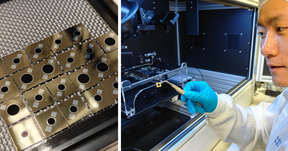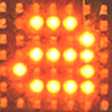
Detecting infrared light is critical in an enormous range of technologies, from remote controls to autofocus systems to self-driving cars and virtual reality headsets. That means there would be major benefits from improving the efficiency of infrared sensors, such as photodiodes.
Researchers at Aalto University have developed a new type of infrared photodiode that is 35% more responsive at 1.55 µm, the key wavelength for telecommunications, compared to other germanium-based components. Importantly, this new device can be manufactured using current production techniques, making it highly practical for adoption.
‘It took us eight years from the idea to proof-of-concept,’ says Hele Savin, a professor at Aalto University.
The basic idea is to make the photodiodes using germanium instead of indium gallium arsenide. Germanium photodiodes are cheaper and already fully compatible with the semiconductor manufacturing process – but so far, germanium photodiodes have performed poorly in terms of capturing infrared light.
Savin’s team managed to make germanium photodiodes that capture nearly all the infrared light that hits them.
‘The high performance was made possible by combining several novel approaches: eliminating optical losses using surface nanostructures and minimizing electrical losses in two different ways,’ explains Hanchen Liu, the doctoral researcher who built the proof-of-concept device.
The team’s tests showed that their proof-of-concept photodiode outperformed not only existing germanium photodiodes but also commercial indium gallium arsenide photodiodes in responsivity. The new technology captures infrared photons very efficiently and works well across a wide range of wavelengths. The new photodiodes can be readily fabricated by existing manufacturing facilities, and the researchers expect that they can be directly integrated into many technologies.
‘The timing couldn’t be better. So many fields nowadays rely on sensing infrared radiation that the technology has become part of our everyday lives,’ says Savin.
Savin and the rest of the team are keen to see how their technology will affect existing applications and to discover what new applications become possible with the improved sensitivity.
The study was published on 1st Jan 2025 in the journal Light: Science & Applications.
Link to the article: www.nature.com/articles/s41377-024-01670-4
Read more news

Major funding powers development of next-generation machine technology aimed at productivity leap in export sectors
The BEST research project is developing new types of sealing, bearing, and damping technology.
The TAIMI project builds an equal working life – a six-year consortium project seeks solutions to recruitment and skill challenges
Artificial intelligence (AI) is changing skill requirements, the population is aging, and the labor shortage is deepening. Meanwhile, the potential of international experts often remains unused in Finland. These challenges in working life are addressed by the six-year TAIMI project funded by the Strategic Research Council, and implemented by a broad consortium.
Unite! Seed Fund 2026: Call opens on 20 January 2026
Gain an early overview of the Unite! Seed Fund Call of Spring 2026. The call includes three funding lines: Student Activities, Teaching and Learning, and Research and PhD.






